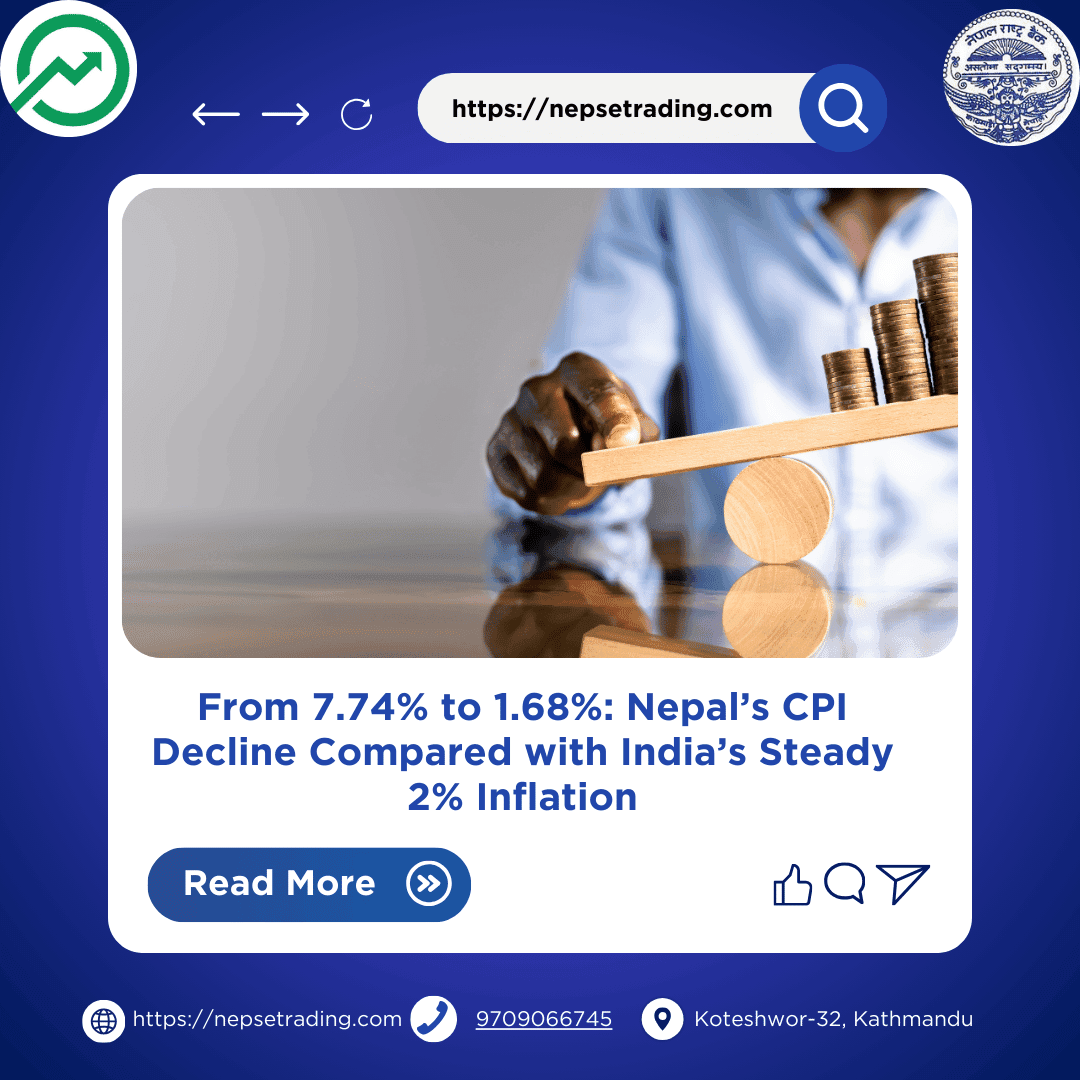By Sandeep Chaudhary
From 7.74% to 1.68%: Nepal’s CPI Decline Compared with India’s Steady 2% Inflation

Nepal’s inflation story over the past four years shows a dramatic cooling compared to India’s relatively steady trend. In 2022/23, Nepal’s CPI averaged 7.74%, far higher than India’s 6.06%, reflecting global commodity shocks, fuel price hikes, and domestic food shortages. This pattern of Nepal outpacing India continued in 2023/24, though the gap narrowed, with Nepal at 5.44% and India at 5.11%.
By 2024/25, the difference had almost vanished, with Nepal posting 4.06% inflation versus India’s 3.91%. This convergence reflected easing food inflation in both countries, supported by stable energy imports and better agricultural supply. However, Nepal still hovered slightly higher than India due to persistent service inflation.
The real turning point came in 2025/26, when Nepal’s inflation dropped to just 1.68% in August, falling below India’s 2.07% for the first time in four years. This reversal was driven by a sharp decline in food inflation in Nepal—especially cereals and vegetables—while India faced agricultural price pressures from erratic monsoon conditions. Though Nepal’s households enjoy some relief at the grocery level, non-food and service costs (housing, health, education, utilities) remain on an upward path, showing that structural inflation challenges persist beneath the headline numbers.
This divergence highlights how the two economies often move in tandem due to shared global and regional factors, but domestic supply and climate shocks can push them apart. For Nepal, the latest figures suggest short-term consumer relief, while India’s steadier inflation points to resilience but continued agricultural vulnerability.









